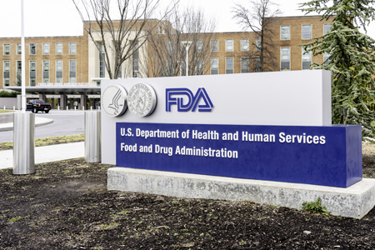FDA Releases Final Guidance On Early-Phase Cell & Gene Therapy Trials
By Tim Sandle, Ph.D.

The cell and gene therapy development process involves carefully screening different variants of a product type. To aid this initial process and to ensure that suitable evidence is gathered so that effective variants of the product are taken through to later-stage trials, the FDA has produced a finalized cell and gene therapy guidance, Studying Multiple Versions of a Cellular or Gene Therapy Product in an Early-Phase Clinical Trial.1 Cell and gene therapy products are combined in this document, ostensibly because they represent overlapping fields of biopharmaceutical research and possess similar therapeutic goals, in terms of targeting DNA or RNA inside or outside the human body.
The objective of the FDA gene therapy guidance is to outline the important safety aspects and data verifications to support efficacy claims for studies of multiple versions of a cellular or gene therapy product in an early-phase clinical trial for a single disease within a single clinical trial. These studies are not intended to provide primary evidence of effectiveness to support a marketing application; instead, the aim is to determine which version(s) of the product to take forward for later-stage trials and an eventual IND application.
The FDA cell and gene therapy guidance first appeared in draft form in September 2021, and it has evolved to provide greater clarity surrounding statistically significant differences between test versions of a product.
Objectives Of Early-Phase Trials
The FDA guidance on cell and gene therapy was triggered by clinical trial sponsors expressing interest in gathering preliminary evidence of safety and activity using multiple versions of a cellular or gene therapy product in a single clinical trial. These approaches are sometimes referred to as “umbrella trials” and it is important that these are carefully designed given the costs and complexities of later-stage trials. While early-stage trials need to capture information of value to enable decisions to be made about which product variants to take forward, they do not need to capture statistically significant data in terms of efficacy; however, they need to satisfy the criteria for safety. To demonstrate safety, for each variation of the product, details of the formulation, manufacturing controls, and toxicological information for the variant product must be provided.
For all subsequent stages of the clinical trial process, the FDA requires a new IND for each variant of the product (hence, each iteration of a cell or gene therapy product taken forward is regarded as a distinct product). To ensure there is no ambiguity over this, the FDA cell and gene therapy guidance clarifies the types of changes to product design that constitute “different versions.”
Developing The Master Protocol
Of particular importance for biopharmaceutical companies are the recommendations for drawing up a master protocol in order to evaluate different versions of a cell or gene therapy product, focusing on both the safety of the product and an assessment of the bioactivity of each version of the trial product. This is to ensure that a sufficient level of scientific and clinical understanding is developed prior to Phase 1 trials involving patients and examining responses to dose escalation. Here, the guidance connects with the FDA’s guidance for master protocols, which was issued in March 2022.2 An important element to consider when putting together a master protocol is avoiding any overinterpretation of the findings.
An important part of the protocol development is identifying and characterizing risk. Gene therapy carries potential risks, including the role of the carrier of the genetic material – the vector. Most vectors are genetically altered viruses. The risks that need to be addressed include:
- avoiding an unwanted immune system reaction and subsequent inflammation;
- a lack of precision, where the vector targets the wrong cells causing damage to healthy cells;
- direct infection caused by the carrier virus; and
- tumor development, should the genes carried on the vector be inserted in the wrong location along the target DNA.
In terms of the definition provided by the FDA cell and gene therapy guidance, in all cases, any difference in the genetic sequence of a vector, promoter/enhancer, or transgene constitutes a “new version” of the product.
Preparing For Subsequent Phases
The new FDA cell and gene therapy guidance is especially useful for trial sponsors in providing the main requirements for organizing and structuring INDs and submitting new information, as well as how to capture and report adverse events. To avoid unnecessary duplication of effort, the guidance describes how a sponsor can designate a primary IND (an IND that contains information about the master trial protocol, referred to as “IND A”) and how to designate one or more secondary INDs (these will contain specific information about a selected product version; however, they do not need to repeat the information about the umbrella trial provided in the “Primary IND,” and these are referred to as “IND Bs”). The purpose of this nomenclature is to differentiate between INDs that include clinical information about the umbrella trial (primary INDs) and those INDs that are not required to include clinical information about the umbrella trial (secondary INDs).
Where an “arm” (a specific intervention involving a new version of the investigational cellular or gene therapy) is added to the study, the guidance recommends that a tertiary IND is added (referred to as an “IND C”). Both the secondary and primary INDs require updating to cross-reference each additional study arm. The FDA requires that sponsors issue a letter for the amendment to the primary IND, specifying the secondary IND number(s), including IND C. The primary IND should be updated to include the chemistry, manufacturing, and controls, together with the pharmacology/toxicology information, for product C.
Hold Procedure
In emphasizing safety, the guidance states that if one arm is placed on hold, then the Primary IND needs to move to a partial hold phase. The FDA may require this to become a permanent hold. In circumstances where a partial hold is in place, the trial sponsor is required to submit a response to each IND that was placed on hold to the agency. The information provided should be targeted at the specific IND phase that triggered the hold.
Reporting
Reporting requirements need to follow preexisting FDA guidance3 and safety reports must be generated for an investigational product in relation to all of the sponsor’s INDs that are relevant to that product (including all product versions). As with other trials, the requirement to provide an annual report for all active trials remains in place.
The new FDA cell and gene therapy guidance does not preclude alternative approaches being considered for structuring and organizing INDs for studies in a single disease of multiple versions of an investigational product provided that these are carefully planned and have a scientific basis. This fits with the overall aim of the guidance, which is to provide a degree of logic to the organization of trials for this next generation of vital medicines.
You can submit comments to the FDA at any time. All written comments should be identified with the docket number FDA-2021-D-0776.
References
- FDA “Studying Multiple Versions of a Cellular or Gene Therapy Product in an Early-Phase Clinical Trial,” Guidance for Industry, U.S. Department of Health and Human Services, November 2022: https://www.fda.gov/media/152536/download
- FDA “Master Protocols: Efficient Clinical Trial Design Strategies to Expedite Development of Oncology Drugs and Biologics Guidance for Industry,” U.S. Department of Health and Human Services, March 2022: https://www.fda.gov/media/120721/download
- FDA Guidance for Industry and Investigators: Safety Reporting Requirements for INDs and BA/BE Studies, U.S. Department of Health and Human Services, December 2012, https://www.fda.gov/media/79394/download
About The Author:
 Tim Sandle, Ph.D., is a pharmaceutical professional with wide experience in microbiology and quality assurance. He is the author of more than 30 books relating to pharmaceuticals, healthcare, and life sciences, as well as over 170 peer-reviewed papers and some 500 technical articles. Sandle has presented at over 200 events and he currently works at Bio Products Laboratory Ltd. (BPL), and he is a visiting professor at the University of Manchester and University College London, as well as a consultant to the pharmaceutical industry. Visit his microbiology website at https://www.pharmamicroresources.com.
Tim Sandle, Ph.D., is a pharmaceutical professional with wide experience in microbiology and quality assurance. He is the author of more than 30 books relating to pharmaceuticals, healthcare, and life sciences, as well as over 170 peer-reviewed papers and some 500 technical articles. Sandle has presented at over 200 events and he currently works at Bio Products Laboratory Ltd. (BPL), and he is a visiting professor at the University of Manchester and University College London, as well as a consultant to the pharmaceutical industry. Visit his microbiology website at https://www.pharmamicroresources.com.
